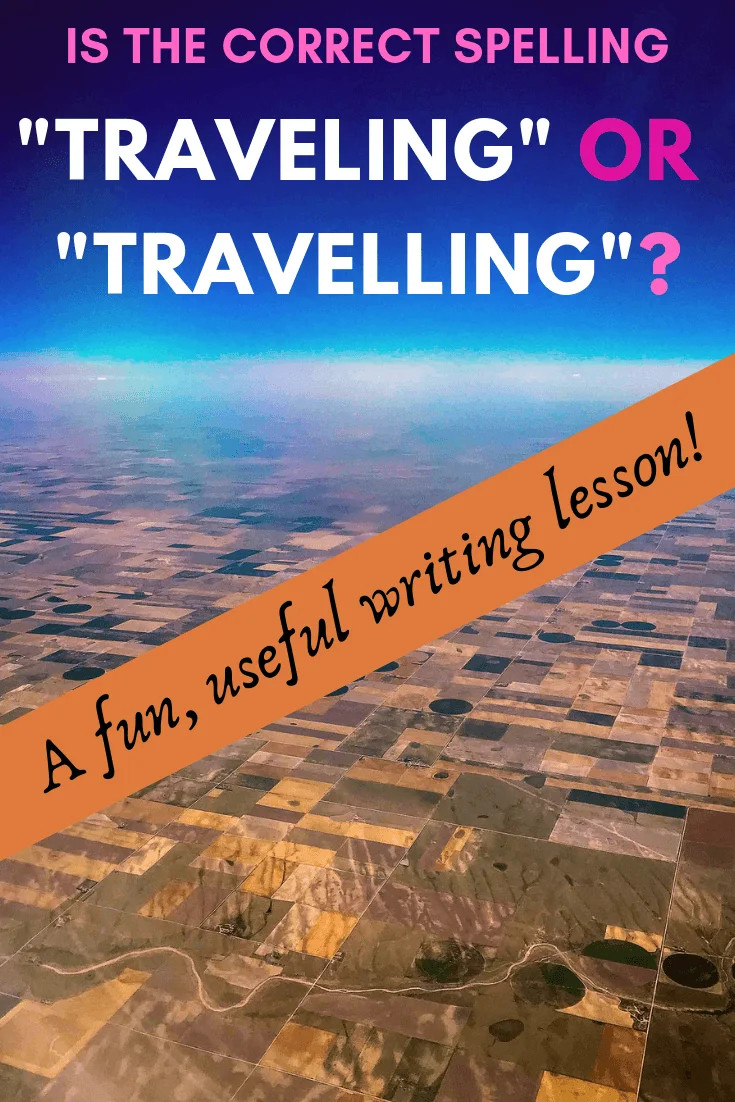Have you ever paused mid-sentence, fingers hovering over the keyboard, questioning whether it’s “traveling” or “travelling”? “Traveled” or “travelled”? You’re not alone! This common spelling conundrum trips up even seasoned writers and avid travelers alike. The confusion stems from the fascinating world of English language variations, specifically American and British English.
Navigating the nuances of English spelling: is it traveling with one L or travelling with two?
The short answer? Both spellings are correct, but their appropriateness hinges on geography. Let’s embark on a linguistic journey to clarify when to use “traveling” with one “L” and “travelling” with two, ensuring your writing is spot-on, no matter where your audience resides.
Decoding the “L” Rule: American vs. British English
The core of the “traveling” vs. “travelling” debate lies in the distinction between American and British English spelling conventions. Think of it as a linguistic border: cross it, and the rules subtly shift.
In the United States and other regions adhering to American English, the rule is simple: one “L”. Therefore, in an American context, you would correctly use:
- Traveling
- Traveled
- Traveler
Imagine you’re writing a blog post about your road trip across the USA for a predominantly American audience. Sticking to the single “L” spelling of “traveling” ensures clarity and familiarity for your readers.
 Elegant patterned carpets symbolizing linguistic history
Elegant patterned carpets symbolizing linguistic history
However, venture across the Atlantic, or into countries influenced by British English, and the spelling transforms. In the United Kingdom, Ireland, and many Commonwealth countries, the double “L” reigns supreme. In these regions, the correct spellings are:
- Travelling
- Travelled
- Traveller
If you’re crafting content for a British audience, or writing about your adventures in London, employing the “travelling” spelling demonstrates attention to detail and linguistic accuracy.
This difference isn’t arbitrary. It’s rooted in the historical evolution of the English language and the distinct paths it took in different parts of the world. Understanding this geographical divergence is key to mastering the “traveling” vs. “travelling” puzzle.
Canada’s Unique Position: A Commonwealth Exception
Just when you think you’ve grasped the rule, there’s always an exception to keep things interesting! Canada, geographically nestled next to the United States, might seem like it would follow American spelling conventions. However, Canada, as a member of the Commonwealth, largely adopts British English spellings, including the double “L” in “travelling.”
Therefore, if you’re writing for a Canadian audience or about your Canadian travels in vibrant cities like Quebec City, “travelling” is the preferred spelling.
Other Commonwealth Countries aligning with the double “L” spelling include Australia, New Zealand, and South Africa. When writing for audiences in these nations, remember to apply the “two L” rule for “travelled,” “traveller,” and “travelling.”
 Woman overlooking mountains, contemplating traveler vs traveller spelling
Woman overlooking mountains, contemplating traveler vs traveller spelling
Why “Teaching Traveling” and Not “Teaching Travelling”?
This website, “familycircletravel.net,” uses the single “L” spelling – “traveling.” This choice is deliberate and reflects the primary audience and origin of the content. As the content creator is based in the United States and the website targets a predominantly American readership interested in family travel tips and advice relevant to a US context, “traveling” aligns with the expected spelling.
Furthermore, consistency within a brand or website is important. Just as a brand might choose a specific color palette or font, selecting a spelling convention and adhering to it creates a cohesive and recognizable identity.
However, the digital world is global, and content often transcends geographical boundaries. This brings us to a common challenge: what happens when your audience is a mix of American and British English speakers?
 Bottle cap chair symbolizing travel and mixed linguistic contexts
Bottle cap chair symbolizing travel and mixed linguistic contexts
Navigating Mixed Audiences: The Spelling Dilemma
In today’s interconnected world, content creators frequently encounter diverse audiences. Imagine you’re writing a travel blog intended for global readers, including those from the US and the UK. Or perhaps you’re featuring guest contributions from individuals who use different spelling conventions. How do you decide between “traveling” and “travelling” in these mixed contexts?
Let’s consider a scenario: You’re interviewing a British family about their family travel experiences for your website. They use “travelling” in their responses. Do you “correct” their spelling to “traveling” to maintain consistency with American English, or do you preserve their original British spelling?
Spell-checkers might vehemently suggest changing “travelling” to “traveling” if your default language is set to American English. However, linguistic sensitivity and audience expectations should guide your decision.
 Rocky Mountain vista representing British travel experiences in America
Rocky Mountain vista representing British travel experiences in America
Choosing Your Spelling Strategy: Two Viable Paths
When faced with a mixed audience, you have two primary options for handling “traveling” vs. “travelling,” both with valid justifications:
Option 1: Consistency is King (Choose One and Stick With It)
Select either American or British English spelling and apply it consistently throughout your content. For a website primarily targeting a US audience, opting for American English (“traveling”) ensures a familiar reading experience for the majority of visitors. In this case, you would adjust any instances of “travelling” to “traveling” for uniformity.
This approach prioritizes internal consistency and caters to the dominant audience demographic. However, it might subtly alienate readers accustomed to the other spelling convention.
 Scenic drive illustrating the decision point in spelling consistency
Scenic drive illustrating the decision point in spelling consistency
Option 2: Audience-Aware Flexibility (Adapt to Context)
Alternatively, you can adopt a more nuanced approach and tailor your spelling to the specific context and anticipated audience for each piece of content. If you’re featuring a guest post from a British traveler, preserving their original “travelling” spelling respects their linguistic identity and resonates with readers familiar with British English. Conversely, articles aimed at a primarily American audience would utilize “traveling.”
This approach demonstrates linguistic sensitivity and caters to diverse readerships. However, it requires more editorial effort and a clear understanding of your target audience for each piece of content.
Bonus Tip: The Art of Wordplay (Avoiding the “L” Dilemma)
When in doubt, or if the “traveling” vs. “travelling” decision feels particularly thorny, consider a clever linguistic maneuver: rephrase! In some cases, you can subtly restructure your sentence to avoid using “traveling” or “travelling” altogether.
For example, instead of writing “I am a seasoned traveler,” you could rephrase it as “I have extensive experience in travel.” While not always feasible, this wordplay tactic can be a useful tool in your writing arsenal when you want to sidestep the spelling debate entirely.
 Sunrise representing clarity and linguistic understanding
Sunrise representing clarity and linguistic understanding
Traveling or Travelling: Audience is Your Compass
Ultimately, the “correct” spelling of “traveling” or “travelling” isn’t about right or wrong; it’s about audience appropriateness. Consider who you are writing for and where they are likely to be from. Prioritize clear communication and a comfortable reading experience for your intended audience.
Understanding the American vs. British English spelling distinction empowers you to make informed choices and write with confidence for a global audience. So, whether you choose “traveling” or “travelling,” let your audience be your guide on your linguistic journey!
 Infographic summarizing traveling vs travelling spelling rules
Infographic summarizing traveling vs travelling spelling rules
What are your experiences with the “traveling” vs. “travelling” divide? Have you ever been caught in this spelling quandary? Share your thoughts and questions in the comments below!
Do you have other grammar or writing topics related to travel that you’d like to see explored? Let us know!
Lillie Marshall
[familycircletravel.net Author Bio Link]
Lillie Marshall is a seasoned educator and writer passionate about travel and global education. With years of experience teaching English, she brings a practical and insightful approach to language nuances and communication. Lillie is also the founder of [AroundTheWorldL.com Travel and Life Blog Link] and [DrawingsOf.com Educational Art Link]. Stay connected with her travel adventures and educational resources by subscribing to her newsletter and following @WorldLillie on social media!
